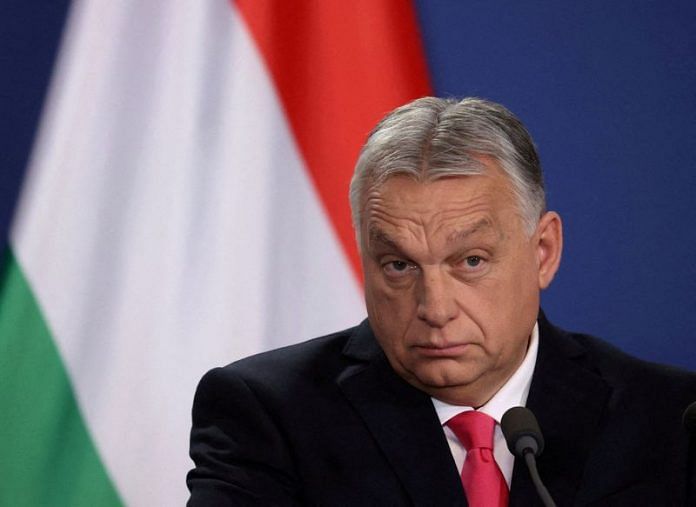By Gergely Szakacs
BUDAPEST (Reuters) – The Hungarian government’s budget plans for the 2026 election year could be at risk if its economic growth assumptions prove too optimistic, the head of budget watchdog Fiscal Council told Reuters.
Prime Minister Viktor Orban’s government forecasts 4.1% economic growth next year, well above the 3.2% economists’ consensus in a Reuters poll and 2.6% forecast by the International Monetary Fund.
S&P Global, which cut Hungary’s credit rating outlook to negative from stable last month citing fiscal stability concerns, projects next year’s growth at 2.5%.
“The most important downside risk to the budget is if the projected growth trajectory proves to be too optimistic for 2026 as well,” Fiscal Council Chairman Gabor Horvath said in remarks cleared for publication on Sunday.
“There are significant uncertainties around this year’s GDP growth, and definitely the uncertainties are not smaller regarding 2026 growth.”
Orban has banked on economic recovery to help him secure another term in next year’s elections when he is expected to face the sternest opposition challenge in well over a decade.
An upturn, initially expected already last year, so far has failed to materialize, forcing the government to cut spending and hike taxes and to cut its 2025 growth forecast.
Hungary’s economy was mired in stagflation in the first quarter, with output unchanged from a year ago and inflation running at the European Union’s highest levels.
Responding to the weaker-than-expected first-quarter data, the Economy Ministry told Reuters it planned to submit the budget to parliament with its original economic assumptions, with a next review of its forecasts due in June.
The government aims to reduce next year’s budget deficit to 3.7% of gross domestic product from a recently-increased 4% target in 2025, and a higher-than-expected 4.9% shortfall in 2024. Economists polled by Reuters, however, see next year’s deficit at 4.2%.
Given the scale of uncertainties in the world economy, the early adoption of the 2026 budget did not help, Horvath said.
The level of reserves, just like in the 2025 budget, remained too low to tackle contingencies.
“The level of the reserves is very low again, which, compared to the very high uncertainties, might be insufficient,” he said.
Moody’s Analytics has warned that tariffs would hurt export-reliant central European economies, with the Czech Republic, Romania and Hungary among those hardest hit. Hungary’s central bank has also flagged those as a risk.
Horvath also said it was risky for the government to assume that its steep tax cuts for families can be financed by stronger growth, while special business taxes remain in place.
(Reporting by Gergely Szakacs; Editing by Tomasz Janowski)
Disclaimer: This report is auto generated from the Reuters news service. ThePrint holds no responsibility for its content.




